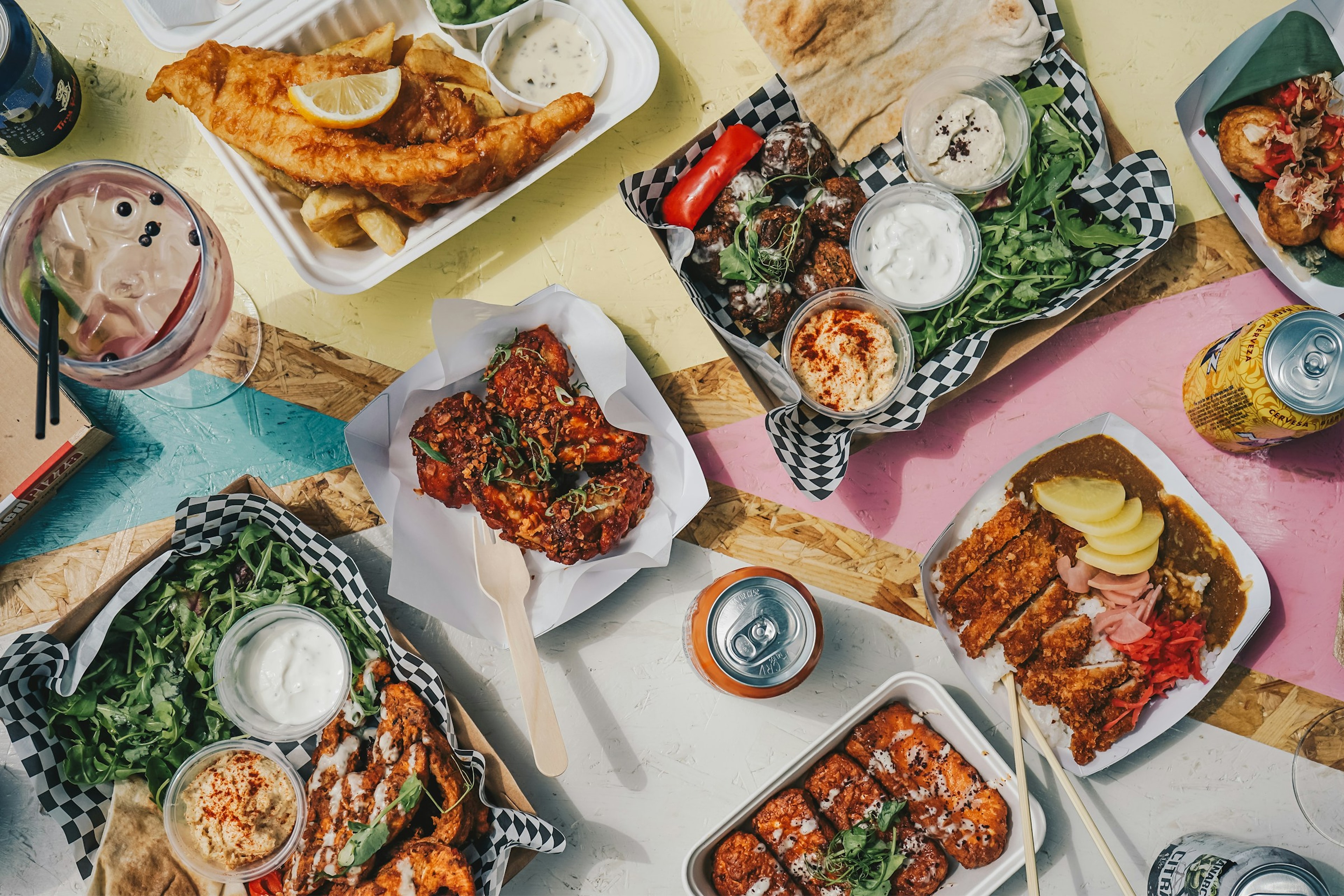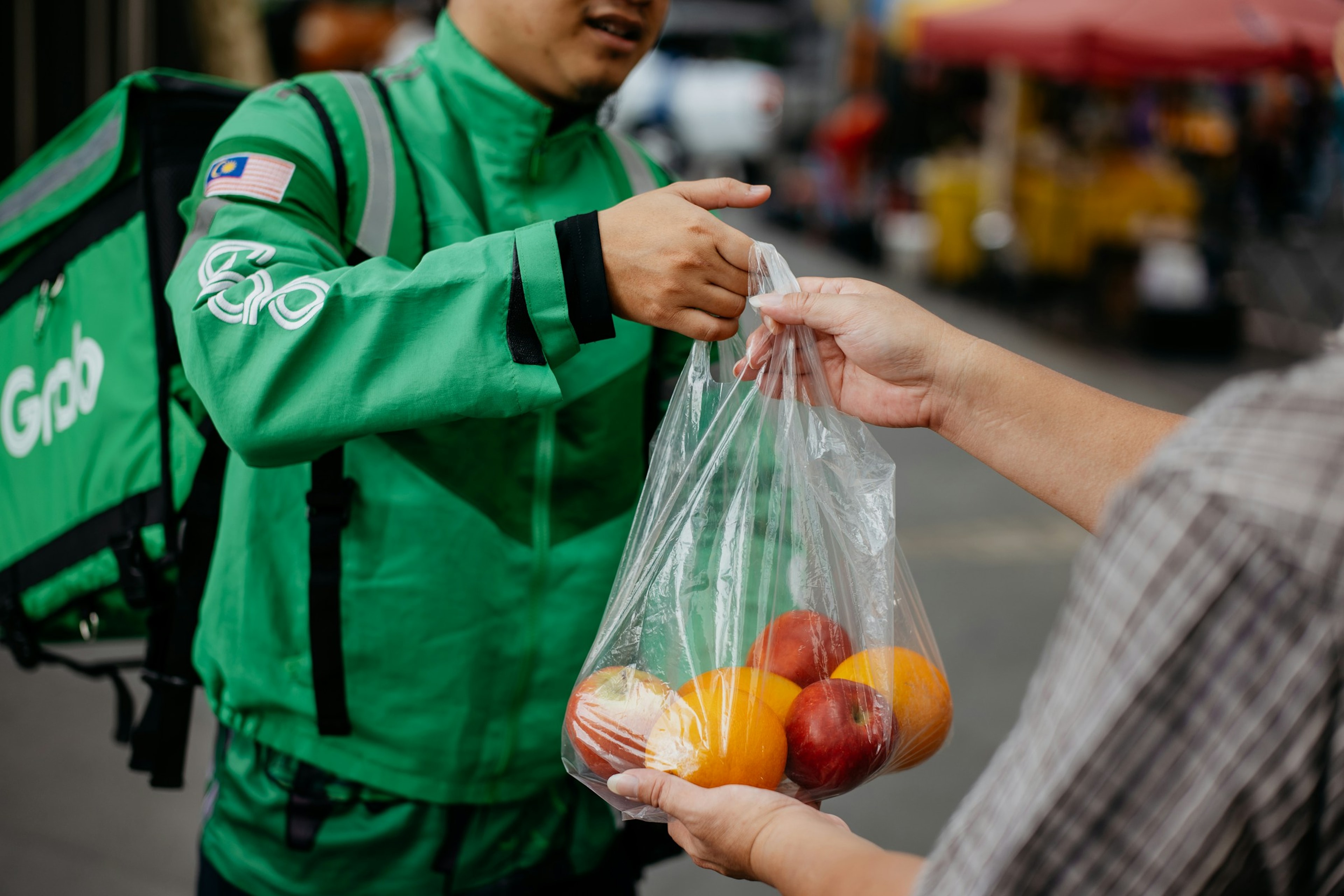How I Built a Food Delivery Platform Processing 200+ Daily Orders.
Abiodun Biobaku
Author
In mid 2024, Eatup had a clear vision to create a food delivery platform that could compete with the big players while supporting local restaurants. Six months later, the platform is live, processing over 200 orders daily, and supporting 15+ restaurant partners.
In this post, I'll walk you through the technical decisions, challenges, and solutions that went into building a production-ready food delivery platform from scratch.
The Challenge
EatUp faced a common startup problem: they needed a custom platform that could:
- Handle real-time order tracking for customers, restaurants, and delivery drivers
- Support multiple restaurants with their own menus and pricing
- Process secure payments with multiple payment gateways
- Scale quickly as they onboarded new restaurants
- Work flawlessly on mobile devices (where 80% of orders come from)
They needed to launch within 3 months and keep costs reasonable for a bootstrapped startup. However, off-the-shelf solutions like Shopify or WordPress couldn't handle the complexity of multi-vendor management and real-time tracking, they needed a custom web application.
The Technical Approach
After analyzing their requirements, I recommended building a full-stack JavaScript application using the MERN stack (MongoDB, Express.js, React, Node.js). Here's why:
MongoDB - Perfect for storing dynamic restaurant menus, order data, and user profiles. The flexible schema meant we could iterate quickly without database migrations.
Express.js + Node.js - Excellent for handling real-time connections (WebSockets for live order updates) and processing high volumes of concurrent requests.
React - Allows building three separate interfaces (customer app, restaurant dashboard, admin panel) while sharing components and logic.
Additional Technologies
- Socket.io for real-time order status updates
- Paystack and Kora for payment processing (multiple gateways for redundancy)
- JWT for secure authentication
- Cloudinary for menu image hosting
- Google Maps API for delivery tracking
System Architecture
The platform consists of four main components:
1. Customer-Facing Application
The customer app is a responsive React web application where users can:
- Browse restaurants by cuisine, location, or rating
- View real-time menu availability
- Place orders with special instructions
- Track delivery in real-time
- Rate restaurants and drivers after delivery
Key technical decision: We built a Progressive Web App (PWA) instead of separate iOS/Android apps. This meant:
- One codebase for all platforms
- No app store approval delays
- Instant updates without user downloads
- 60% faster development time
2. Restaurant Dashboard
Each restaurant gets their own dashboard to:
- Manage menus (add/edit items, prices, availability)
- Receive order notifications instantly
- Update order status (preparing, ready for pickup)
- View sales analytics and popular items
- Manage operating hours
Challenge solved: We implemented role-based access control so restaurant managers could give limited access to staff members without sharing full admin credentials.

3. Driver Mobile Interface
Delivery drivers use a mobile-optimized interface to:
- See available delivery jobs
- Accept orders and navigate to restaurants/customers
- Update delivery status in real-time
- Track earnings and completed deliveries
Technical highlight: The driver interface updates order status via WebSocket connections, so customers see live updates without refreshing.
4. Admin Control Panel
The EatUp team uses a comprehensive admin panel to:
- Onboard new restaurants
- Monitor all orders across the platform
- Resolve customer support issues
- View platform-wide analytics
- Manage delivery zones and pricing
Key Features Built
Real-Time Order Tracking
This was the most technically challenging feature. Here's how it works:
Backend: When a customer places an order, the server creates an order document and emits a WebSocket event to three parties:
- The restaurant (new order notification)
- The customer (order confirmation)
- Available drivers in the area (new delivery opportunity)
Frontend: Each interface subscribes to relevant WebSocket channels and updates the UI instantly when order status changes.
// Simplified example of real-time order updates
socket.on('orderStatusUpdate', (orderData) => {
// Update UI based on order status
if (orderData.status === 'preparing') {
showNotification('Your order is being prepared!')
} else if (orderData.status === 'out_for_delivery') {
showDeliveryTracking(orderData.driverId)
}
})Result: Customers can see exactly when their food is being prepared, when the driver picks it up, and track delivery in real-time. This transparency reduced "Where's my order?" support tickets by 70%.
Multi-Vendor Management
Unlike single-restaurant systems, EatUp needed to support dozens of independent restaurants, each with:
- Unique menus and pricing
- Different operating hours
- Custom delivery zones
- Separate bank accounts for payouts
Solution: I designed a flexible restaurant schema that allows each vendor to operate independently while the platform handles order routing, payment collection, and commission calculation automatically.
When a customer places an order:
- Payment is collected via Kora/Paystack
- Platform fee (15%) is held in escrow
- Restaurant's 85% is scheduled for payout
- Delivery fee goes to the driver

This happens automatically without manual intervention, which was crucial for scaling.
Payment Integration
We integrated two payment gateways:
- Paystack
- Kora
Why two? Redundancy. If one gateway has downtime, orders continue processing through the backup. We also track which gateway has better success rates for different payment methods and route transactions accordingly.
Security measures:
- All payment data is handled client-side by Paystack/Kora (PCI compliance)
- We never store card details
- JWT tokens expire after 24 hours
- Rate limiting on payment endpoints to prevent fraud
Mobile-Responsive Design
With 80% of orders coming from mobile devices, mobile optimization wasn't optional, it was critical.
Approach:
- Mobile-first design with Tailwind CSS
- Optimized images (WebP format, lazy loading)
- Service workers for offline functionality
- Touch-optimized UI elements
- Fast loading (< 3 seconds on 3G networks)
Result: The app works smoothly even on older smartphones with slower internet connections, which is essential in Nigeria's market.
Challenges & Solutions
Challenge 1: Handling Peak Traffic
During lunch hours (12-2 PM), order volume spikes 5x. Initial deployment caused server slowdowns and the following solutions were implemented:
- Implemented database indexing on frequently queried fields
- Added Redis caching for menu data (menus don't change often)
- Optimized N+1 database queries
- Used connection pooling for MongoDB
This approach improved server response time from 800ms to under 200ms during peak hours.
Challenge 2: Coordinating Multiple Moving Parts
An order involves 4 parties (customer, restaurant, driver, admin), each needing real-time updates. We built a centralized event system using Socket.io rooms. Each order creates a "room" that all relevant parties join. When status changes, one emit updates everyone.
Challenge 3: Menu Management at Scale
Restaurants needed to update menus quickly (daily specials, sold-out items), but menu changes were slow and required technical help. We built an intuitive menu editor with drag-and-drop reordering, bulk editing, and the ability to duplicate items. Restaurants can now update menus in under 2 minutes.
Performance & Results
After 6 months in production, here are the metrics:

Platform Performance
- Processing 150-250 orders daily
- Supporting 15+ restaurant partners
- Average order completion time: 35 minutes
- 98% customer satisfaction rate
- 99.8% uptime (only 2 hours downtime in 6 months)
Technical Performance
- Page load time: 2.1 seconds average
- Order processing: < 200ms server response
- Real-time updates: < 100ms latency
- Mobile performance score: 94/100 (Google Lighthouse)
Business Impact
- 35% month-over-month growth in orders
- 45% of customers are repeat buyers
- Average order value: £12
- Restaurants report 40% increase in online orders
Lessons Learned
1. Start Simple, Scale Smart
We launched with core features only: browse, order, pay, track. Features like loyalty programs and promo codes came later after validating the core platform worked.
Lesson: Don't build everything at once. Launch fast, gather feedback, iterate.
2. Real-Time Features Are Worth It
The real-time order tracking was technically complex but became the most-loved feature. Customers specifically mention it in reviews.
Lesson: Invest in features that directly improve user experience, even if they're harder to build.
3. Mobile Performance Is Non-Negotiable
We spent extra time optimizing mobile performance, and it paid off. 80% of users are on mobile, many with slower connections.
Lesson: Test on real devices with throttled connections, not just your MacBook on fast WiFi.
4. Plan for Scale from Day One
Even though we started small, we architected the system to handle growth. When order volume doubled, the system handled it without major refactoring.
Lesson: It's easier to build for scale upfront than to rewrite later.
Could You Build Something Similar?
If you're a startup founder or business owner thinking about building a custom platform, whether it's food delivery, marketplace, or any other web application, the key is finding a developer who:
- Understands your business, not just code
- Can recommend the right tech stack for your needs
- Plans for scale from the beginning
- Communicates clearly throughout the project
- Delivers working software, not just features
I'm Abiodun Biobaku, a full-stack developer based in Manchester and London, UK, specializing in React, Next.js, and Node.js. I work with startups and businesses to build web applications that solve real problems.
Interested in building something similar?
Whether you need a food delivery platform, marketplace, booking system, or custom web application, I'd love to discuss your project.
Ready to start?
📅 Book a Free Consultation • 💼 View Projects • ✉️ Get in Touch